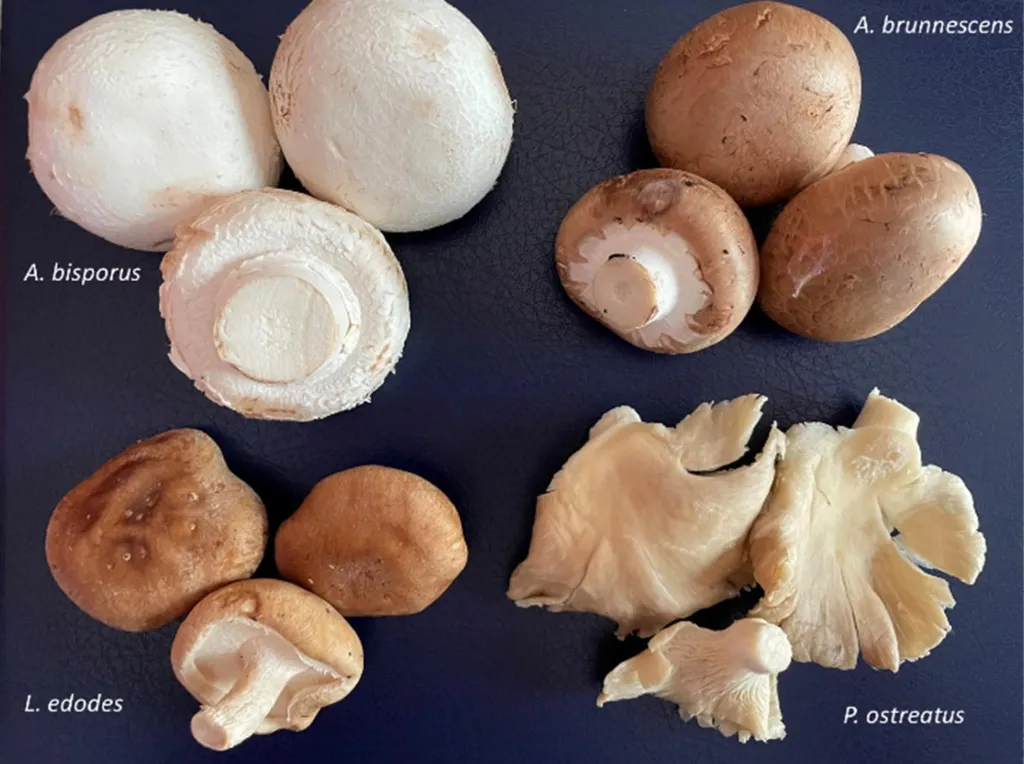In the quest to harness the full potential of medicinal mushrooms, a team of researchers led by Dr. Liu Xiaoyu from the College of Food Science and Engineering at Tianjin University of Science and Technology has made a significant breakthrough. Their study, published in *Shipin Kexue* (which translates to *Food Science*), explores the preparation and properties of aqueous extracts from Naematelia aurantialba, a mushroom known for its health benefits. The research not only sheds light on the optimal methods for extracting these beneficial compounds but also reveals their potential to regulate intestinal flora, a discovery that could have far-reaching implications for the food and pharmaceutical industries.
The team investigated three different pretreatment methods—conventional grinding, steam explosion (SE), and high-pressure homogenization (HPH)—to determine which yielded the highest quality extracts. The results were striking. “The yields and polysaccharide contents of the extracts obtained through steam explosion and high-pressure homogenization were significantly higher than those from conventional grinding,” explained Dr. Liu. This finding suggests that more advanced pretreatment methods could be key to unlocking the full potential of medicinal mushrooms.
The study also delved into the molecular mass distributions and monosaccharide compositions of the extracts. The molecular mass of the extract obtained through conventional grinding was found to be higher than that of the high-pressure homogenization extract, while the steam explosion method introduced new characteristic peaks. These differences could influence the biological activity and efficacy of the extracts, offering valuable insights for future applications.
Perhaps the most compelling aspect of the research is its exploration of the extracts’ effects on intestinal flora. Using a simulated in vitro fermentation model, the team discovered that all extracts altered the composition of the intestinal flora. “Both the steam explosion and conventional grinding extracts increased the abundance of Macroomonas, while the high-pressure homogenization extract boosted the levels of Bifidobacterium and Lactobacillus,” noted Dr. Liu. These findings could pave the way for new probiotic supplements and functional foods designed to support gut health.
The study also revealed that the extracts significantly increased the production of short-chain fatty acids (SCFAs), which are crucial for maintaining a healthy gut. “The butyric acid content was notably higher in the group treated with the conventional grinding extract, while acetic acid and propionic acid levels were elevated in the groups treated with the steam explosion and high-pressure homogenization extracts,” added Dr. Liu. This could have implications for the development of new dietary interventions to support gut health and overall well-being.
The research not only provides a roadmap for the efficient preparation of aqueous extracts from N. aurantialba but also highlights their potential to regulate intestinal flora. As the demand for natural health products continues to grow, this study offers valuable insights for the food and pharmaceutical industries. By optimizing extraction methods and understanding the biological activity of these extracts, researchers can develop more effective and targeted health solutions.
This groundbreaking research, led by Dr. Liu Xiaoyu and his team, represents a significant step forward in the field of medicinal mushrooms. As the world continues to seek natural and effective health solutions, the insights gained from this study could shape the future of functional foods and probiotic supplements. The findings, published in *Shipin Kexue*, offer a promising path forward for the agricultural and pharmaceutical industries, paving the way for innovative applications that harness the power of nature to support human health.

